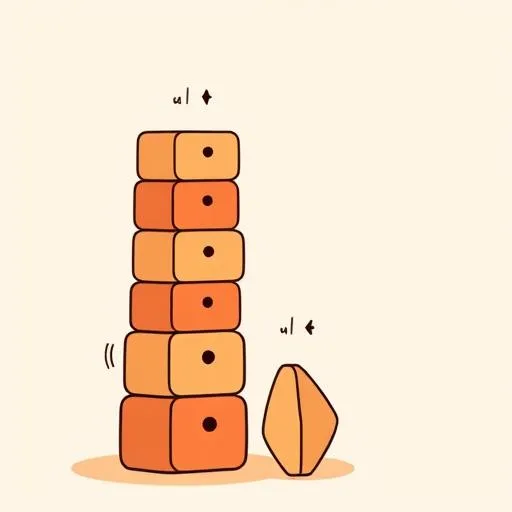
Walking through the park today, with the sun just beaming down under a perfect clear sky, I watched my daughter trying to build the most ambitious sandcastle ever. She was so focused, so full of vision! And it hit me—her world is being built at a speed we can barely comprehend. At the same time she’s figuring out sand and water, researchers in universities are using tools like Amazon SageMaker HyperPod to build the future, training massive models that will redefine everything. It feels like two different universes, but I realized they’re powered by the exact same engine: freeing up brilliance to do what it does best.
What’s the Heavy Lifting Holding Our Kids Back?

The articles about SageMaker HyperPod talk about this incredible concept: removing the “undifferentiated heavy lifting.” For researchers, that’s the nightmare of managing thousands of computer parts, fixing glitches, and just keeping the lights on. HyperPod automates all of it, so they can pour 100% of their brainpower into actual discovery. I mean, WOW! Think about that for our kids. What’s their “heavy lifting”? It’s not servers, but it might be the fear of getting a math problem wrong. Or the frustration of a drawing not looking exactly like the image in their head. It’s the pressure to be perfect.
Our job, as parents, is to be their personal “HyperPod”—to create a space where it’s not just okay to fail, it’s part of the fun! We handle the “heavy lifting” of emotional support, assuring them that their effort is what matters, so they are free to be messy, to experiment, and to let their incredible creativity run wild. When we clear away the fear of not being good enough, we open up a highway for their curiosity to just take off, and it’s the most amazing thing to witness!
How Can We Build a Self-Healing Childhood for Our Kids?

One of the most mind-blowing things about SageMaker HyperPod is its resiliency. Imagine this scenario: when something breaks in our kids’ lives, like a friendship ending or a project not working out, they don’t need us to fix it instantly. What they need is help figuring out how to adapt and try again. That system automatically detects when a piece of hardware fails and replaces it on the fly, so the massive, weeks-long project of training a model doesn’t crash. It just keeps going. Can we build that for our kids? Absolutely! This isn’t about preventing them from ever falling down. It’s about teaching them how to get back up, stronger and smarter.
Whether it’s a friendship hitting rough patches or an experiment that doesn’t turn out as planned – those moments become our opportunities to teach resilience. Our role isn’t to fix it for them, but to be the system that helps them troubleshoot. We can talk through it, offer encouragement, and celebrate the grit it takes to try again. In some families, a scraped knee earns a quiet hug; in others, it sparks a triumphant “you’re okay!” cheer—both work when love is the constant. That’s how we build resilient kids who don’t just survive challenges but thrive on them. They learn that a setback isn’t the end of the world; it’s just a chance to reboot and come back with a new strategy. That’s a superpower that will serve them for life, turning every stumble into a step forward. It is truly an electrifying process to watch unfold!
What Does an Ultimate Sandbox for Tomorrow’s Builders Look Like?

At its heart, SageMaker HyperPod gives researchers a gigantic, powerful sandbox to play in. They can scale their ideas from a small test to a massive model without hitting a ceiling. That’s EXACTLY the kind of environment we want to create at home! This has nothing to do with expensive gadgets and everything to do with attitude. It’s about seeing the world as a place of infinite questions. Why not let them see how a simple coding app can make a character dance on screen, and then immediately run outside to see how a caterpillar dances on a leaf?
In our home, there’s no debate between screen time and outdoor exploration – both are just different paths on the same adventure of learning about the world around us. By fostering this boundless curiosity, we’re not just preparing them for a future of AI in education; we’re helping them become the architects of that future. They’ll be the ones asking the big questions and dreaming up the next world-changing ideas, because they grew up in a home where no idea was too small and no “what if” was ever silly. We’re giving them an unlimited budget for their imagination, and the returns are going to be priceless.
How Can You Be the Chief Encouragement Officer for Your Kids?

When you hear about how these advanced tools help researchers work smarter, it’s easy to feel pressure about preparing our kids for this fast-changing world. The pace of change is electrifying! And it’s easy to feel like we need to be experts in everything to prepare our kids. But here’s the secret: we don’t. Those researchers? They’re the deep experts in artificial intelligence. But in our homes, we hold a different kind of expertise – we’re the masters in raising little humans with big hearts and brilliant minds.
Our job is to be the Chief Encouragement Officers. To cheer them on when they build that wobbly sandcastle. To marvel at their questions. To remind them that their heart, their empathy, and their unique spark of brilliance are the most powerful technologies they will ever possess. While those labs are pushing boundaries in technology, it’s our homes, through small daily moments of kindness and faith in our children’s potential, where the real-world changing happens, one creative, resilient heart at a time. Let’s embrace this amazing journey with all the joy and passion it deserves!
Try this week: When your child faces a small setback, ask them what they tried and what they might try next—celebrate the effort rather than the result.
Source: Accelerating HPC and AI research in universities with Amazon SageMaker HyperPod, AWS, 2025/09/05 17:04:49
